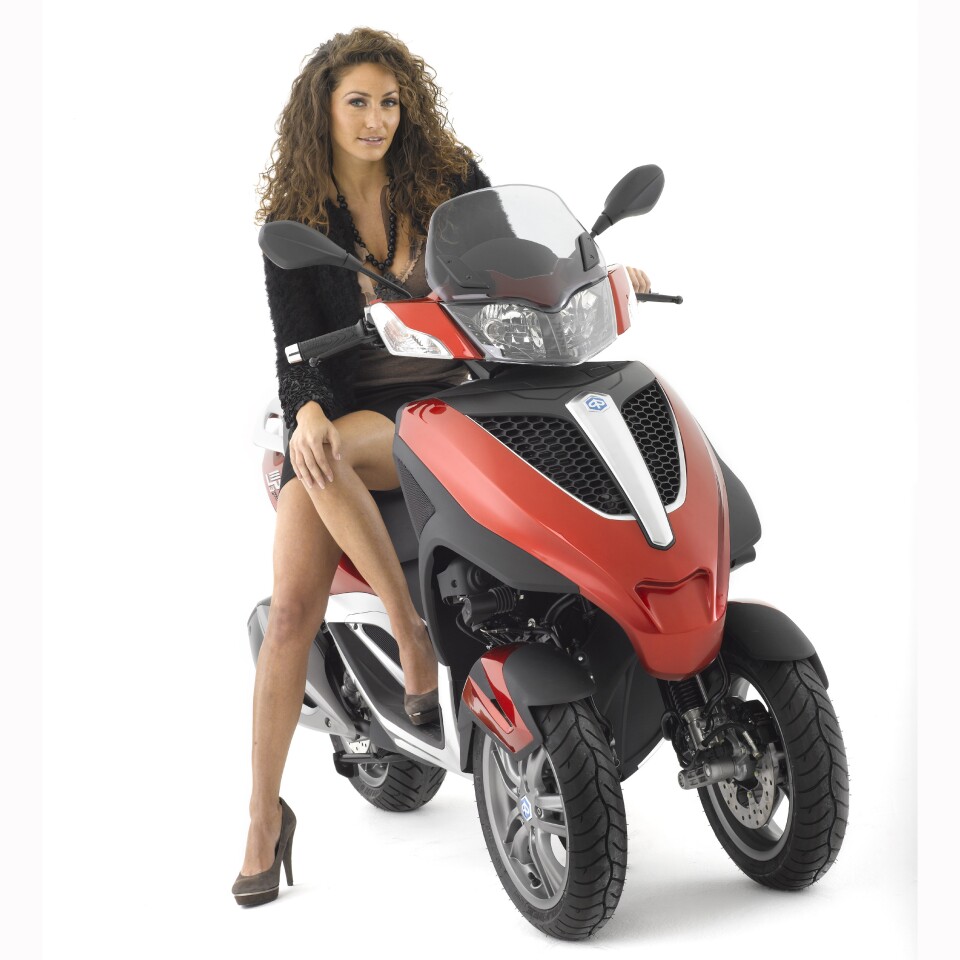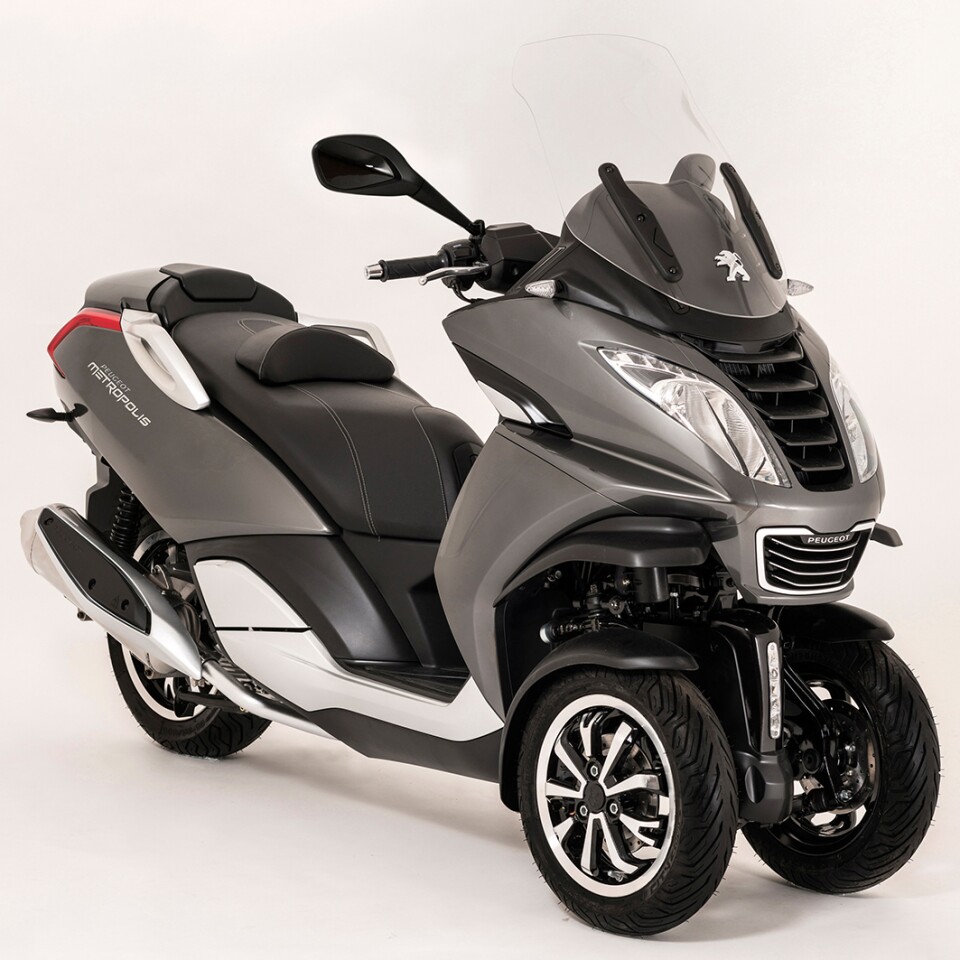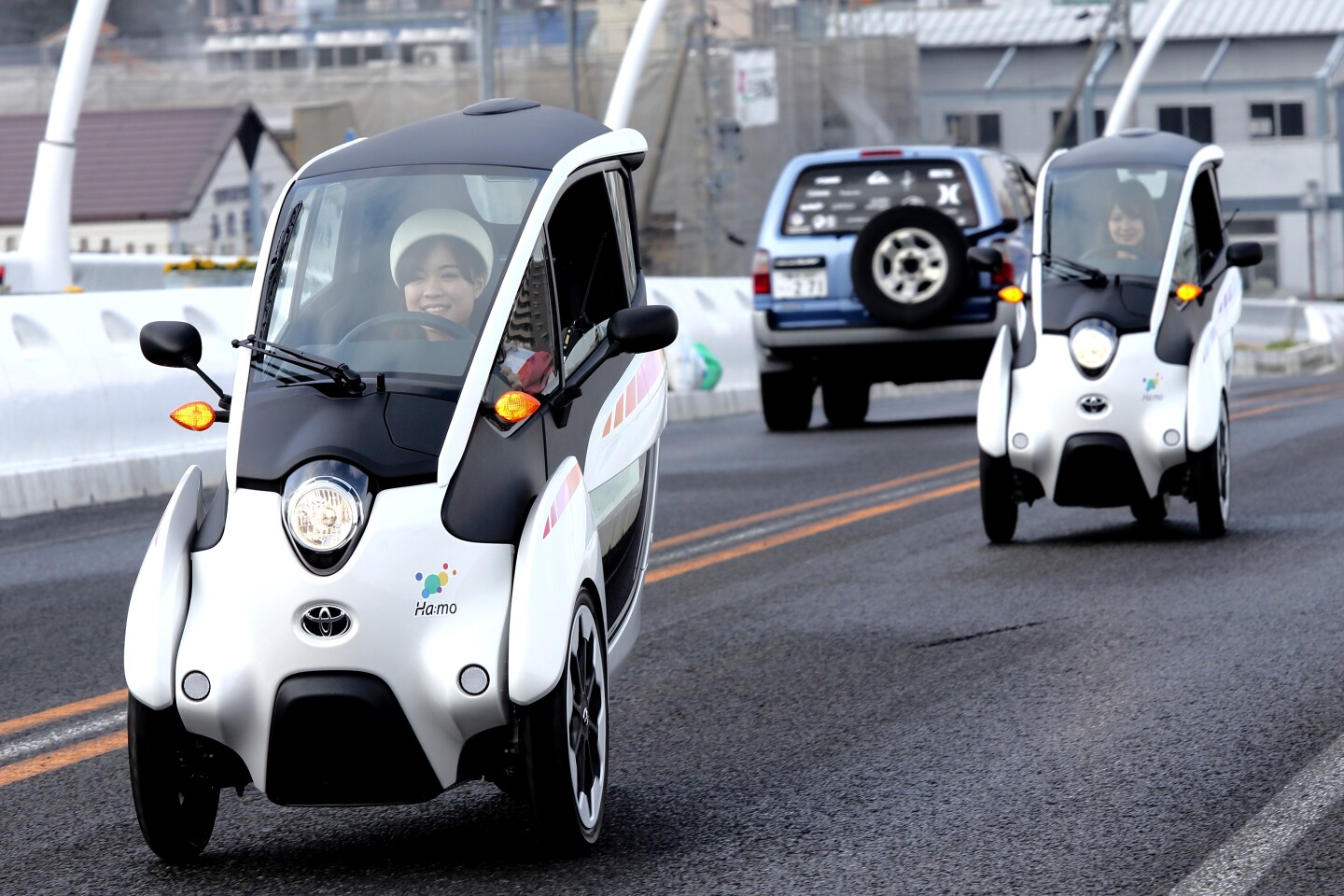Regular readers will know that we’re big fans of the tilting 3-wheeler platform here at Gizmag. Narrow track vehicles are evolving and sprouting up all over the place, but Yamaha’s brand new Tricity represents the first production effort by a major motorcycle company – and it seems to be focused in all the right areas to make it a huge success.
Motoring giant Yamaha has thrown its considerable weight behind the tilting three-wheeler concept as a traffic-busting personal mobility solution with its launch of the 125 cc Tricity in Europe. Let’s take a look at where the market’s at for these kinds of vehicles and what makes them a good option.

Why a tilting three-wheeler?
If you think traffic is bad in your city right now, it’s going to get a lot worse. Populations are on the rise, and the trend in most countries is toward urbanization. The daily commute is already a nasty part of our day, and travel times are on the way up. Asia provides us with a bit of a petri dish as to what comes next. Cities like Shanghai and Bangkok are massively overcrowded and cars move like molasses – they’re just too big.Motorcycles are vastly more practical in these types of cities, especially for solo travelers. And most car commuters ARE solo travelers – the average occupancy of a car on an Australian road, for example, hovers between 1.2 and 1.3 people.
Motorcycles are quick, fuel efficient, very easy to park and skinny enough to filter through gaps in traffic. This is great for the riders themselves, but just as helpful for other drivers. If a motorcycle sits in line with traffic, it acts almost identically to a car in terms of its impact on traffic congestion, but if it filters through traffic, it’s almost as if there was no vehicle on the road at all. So filtering bikes are a huge benefit to pretty much everybody on the road.
Of course, bikes have their own issues, safety being one that’s at the forefront of the mind's of many potential motorcycle commuters, and weather exposure being another. You can get hurt on a bike, they tend to fall over every now and then, and you get wet when it rains.
And this is where the strength of the three-wheeler can show itself. A tilting three-wheeler need not be much wider than a motorcycle, and yet it’s got double the grip at the front end where you really need it, and the added stability of a triangular footprint on the road.
We’ve spent a good deal of time with the first of these jiggers to hit the market – Piaggio’s excellent MP3 250cc – and while the looks and the concept of these strange-looking trikes tend to rankle the sensitivities of battle-hardened bikers like ourselves, nobody in the Gizmag family who rode the thing got off with anything short of praise about the platform’s handling, grip and general riding feel. They’re really that good.
But it’s not sports riders these things are targeted at, it’s the commuting masses. And in terms of ease of use, a feeling of road security and the ability to cover over mistakes that could be catastrophic on a two-wheeler, the three-wheeler platform knocks it out of the park. I’d put my Nanna on one.
Narrow track tilting vehicles are going to be huge in the coming decades, and it’s very significant that a relative giant like Yamaha is throwing its hat into the ring at this early stage. Let’s take a look at some of the other significant examples on the scene to see where the Tricity fits.

Can-Am Spyder
I’ve included the Spyder simply to demonstrate how NOT to design a practical 3-wheeler. It’s as wide as a car and doesn’t tilt, therefore unifying the disadvantages of cars and bikes in one fell swoop. Of course, traffic busting is not Can-Am’s aim with this machine, it’s more of a sports tourer.

Honda’s Gyro Canopy
A massive success in Japan, the Gyro is a tilting three-wheeler with two wheels at the rear end, plus a giant windscreen and a roof. These extremely efficient 50 cc trikes have been around for more than 30 years, having debuted in 1982. Many have large storage boxes on the back, making them outstanding urban delivery and courier vehicles.

Piaggio’s MP3
Our first experience with the 3-wheeler revolution, the sharp-handling MP3 now comes in several different flavors, including the compact YoUrban 300cc (pictured) and a hybrid electric. The MP3 series appears to be Piaggio’s primary focus at this point, the twin front wheels making easy and secure work out of the many road surfaces you find in European urban centers.

Peugeot’s Metropolis
Peugeot has been experimenting with tilting three-wheelers for a long time now, its hybrid 3-wheel-drive Evolution looking all but production ready back in 2009. As it stands, the 400cc Metropolis is Peugeot’s entry into the market with a conventional rear wheel drive, but the company has also been experimenting with roofed-in concepts to further appeal to car drivers.

Nissan’s Land Glider
First shown in 2009, The Land Glider comes at the problem very much from the car side of the equation. A 4-wheel, fully enclosed and fully electric tilting narrow tracker, the Land Glider has yet to materialize as a production vehicle.

Toyota’s i-Road
If you want to bet on any company getting it really right and setting the goalposts for the next wave of 3-wheelers, Japanese auto giant Toyota might be a good place to look. Its i-Road concept is looking very close to production, and being tested in several countries. Fully enclosed and electrically powered, the i-Road has a modest 50 km range, but is unique in that it’s automatically self-balancing so that the rider (driver?) never needs to put a foot on the ground when it’s stopped. It’s probably the closest thing on the horizon to a driver-friendly narrow track car alternative that’s set to take advantage of Toyota’s absolutely vast international distribution and manufacturing channels.

Back to the Yamaha Tricity
So in that landscape, where does the Tricity fit? For starters, don’t be confused by the clearly electric-sounding name. The Tricity is powered by a simple 125 cc scooter motor. It features a tilting parallelogram front suspension geometry not unlike the Piaggio platform, and a unified braking system not unlike what Honda rolls out on its larger sports tourers.Its key points of differentiation in this developing market are its light weight (just 152kg when fully fueled and ready to roll), its apparently very slim front profile, and its affordable price – less than €4000.
The slim front profile is significant. The Piaggio MP3 was wide enough to make us think twice in many lane filtering situations, but the Tricity looks a lot thinner. And when you consider that lane filtering is one of the key attractions of these narrow track vehicles, that could be a very important feature. It’ll be interesting to learn exactly what its dimensions are but the eye test puts it several inches slimmer than the MP3 or Metropolis.

But the price tag is equally important. The Piaggio and Peugeot retail for double what Yamaha is asking, and that’s no small consideration for consumers looking for a cheap, quick commuter.
The Tricity should debut as the narrowest, lightest and cheapest 3-wheeler on the market, backed by Yamaha’s excellent reputation and broad networks. It has an excellent chance of really shaking things up. We look forward to getting our hands on one!










































